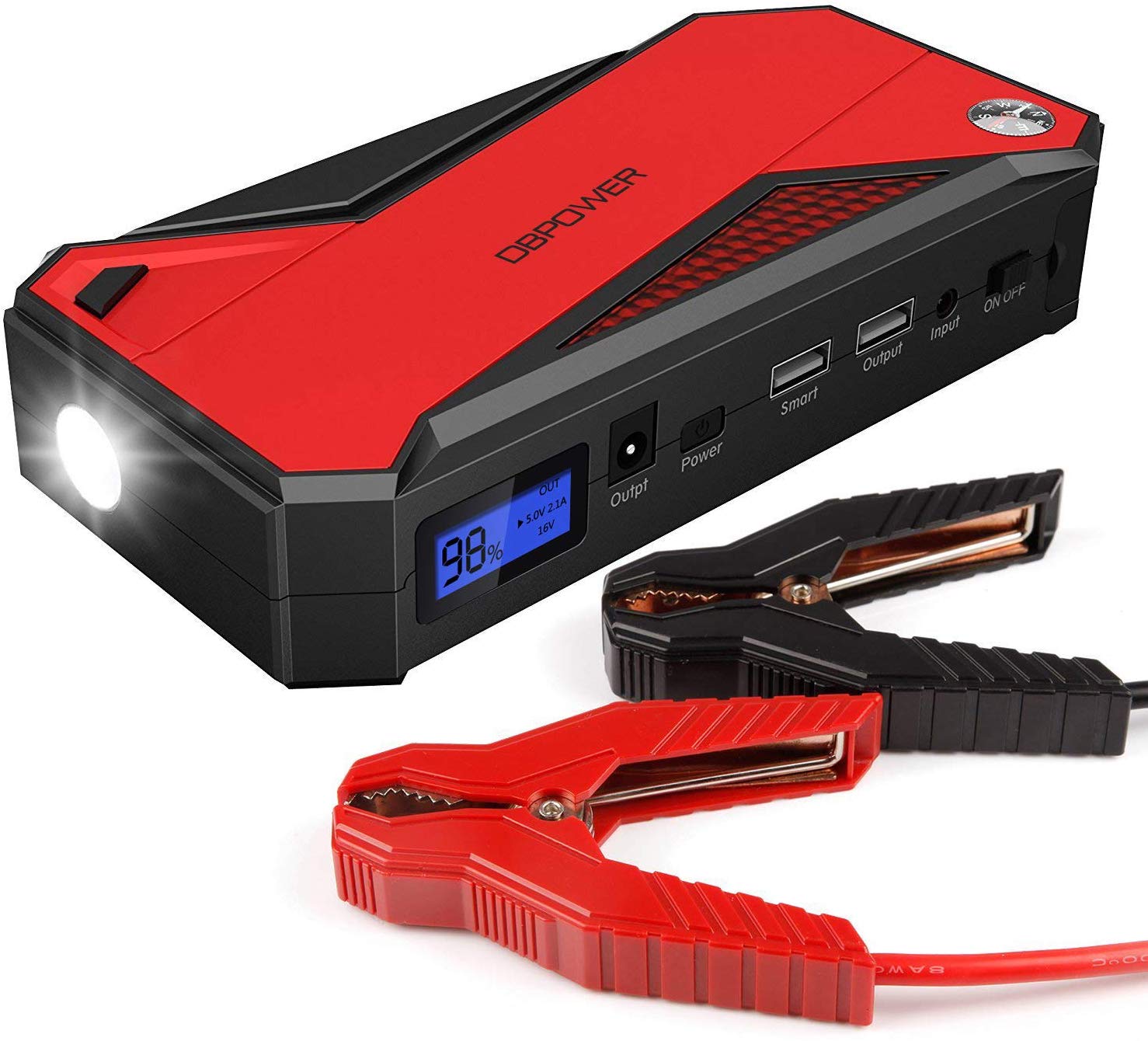Dead Battery? Your Car Jump Starter Guide

Imagine this: It's a frigid winter morning, or perhaps a scorching summer afternoon. You turn the key in your car's ignition, and… nothing. A dreaded clicking sound echoes from under the hood – a dead battery. This frustrating scenario is all too common, but thankfully, a reliable solution exists: the car jump starter. No longer are you stranded, reliant on the kindness of strangers or expensive towing services. A portable car battery jump starter offers independence and peace of mind, allowing you to quickly revive your vehicle and get back on the road.
Car battery jump starters have become an indispensable tool for drivers everywhere. These compact powerhouses provide a convenient and efficient way to boost a dead battery, eliminating the need for another vehicle. They're especially crucial in emergency situations, providing a lifeline when you're far from help. But with a variety of jump starters available on the market, understanding their functions and features is vital for making an informed purchase.
The concept of jump starting a car has been around for almost as long as the automobile itself. Early methods involved cumbersome cables and a second running vehicle. Portable jump starters, however, are a more recent innovation. They evolved from basic lead-acid battery packs to the sophisticated lithium-ion devices we see today, offering increased power, portability, and safety features.
The importance of owning a car jump starter cannot be overstated. Beyond the obvious convenience, they provide a sense of security, knowing you're prepared for unexpected battery failures. Whether you're a frequent traveler, live in a remote area, or simply want to avoid the hassle of calling for assistance, a jump starter is an invaluable addition to your car's emergency kit.
One of the main issues associated with older jump starters was their size and weight. Lead-acid models were bulky and difficult to maneuver. Modern lithium jump starters address this problem with their lightweight and compact design. However, choosing the right jump starter for your vehicle requires careful consideration. Factors like engine size, battery type, and additional features influence the selection process.
A jump starter, also known as a power bank for car batteries or a portable car battery booster, is essentially a portable battery pack designed to deliver a high-current surge of power to a dead car battery. This surge is sufficient to crank the engine and allow the vehicle's alternator to take over, recharging the car's battery.
Benefits:
1. Convenience: No more waiting for roadside assistance or flagging down a Good Samaritan. Jump start your car independently anytime, anywhere.
2. Safety: Modern jump starters often include safety features like reverse polarity protection and overcharge protection, minimizing the risk of damage to your vehicle's electrical system.
3. Portability: Compact and lightweight, they can be easily stored in your car's trunk or glove compartment.
Action Plan for Jump Starting:
1. Turn off the ignition in both vehicles.
2. Connect the red clamp to the positive (+) terminal of the dead battery.
3. Connect the other red clamp to the positive (+) terminal of the jump starter.
4. Connect the black clamp to the negative (-) terminal of the jump starter.
5. Connect the other black clamp to an unpainted metal surface on the car with the dead battery.
6. Turn on the jump starter (if applicable).
7. Try starting the car.
8. Once started, disconnect the clamps in reverse order.
Advantages and Disadvantages
| Advantages | Disadvantages |
|---|---|
| Portability | Can discharge over time |
| Ease of Use | Needs periodic recharging |
| Safety Features | Less powerful than some booster packs |
FAQ:
1. How long does a jump starter hold a charge? It varies, but several months is typical.
2. Can I use a jump starter on a motorcycle? Yes, but ensure it's compatible.
3. How often should I recharge my jump starter? Every few months, even if unused.
4. Are jump starters safe? Yes, with proper usage and safety features.
5. How do I choose the right jump starter? Consider engine size and battery type.
6. What are some good brands of jump starters? NOCO, Stanley, Schumacher are some examples.
7. Can I use a jump starter on other devices? Many have USB ports for charging electronics.
8. What's the difference between a jump starter and a battery charger? A jump starter is for starting a car, a charger is for replenishing a battery over time.
Conclusion
A car jump starter is more than just a handy gadget; it's an essential piece of equipment for any driver. From providing independence in emergency situations to offering peace of mind on long journeys, the benefits are undeniable. Understanding the different types of jump starters, their functionalities, and safety features empowers you to make an informed purchase. Investing in a reliable car jump starter is investing in your safety and convenience on the road. Don’t wait until you're stranded with a dead battery. Equip yourself with the power to get back on track, quickly and easily, with a car battery jump starter.
Finding your dream vintage rav4 a guide to first generation rav4s in michigan
Understanding a 1 4 reverse stock split
Elk river mn your next career move starts now













